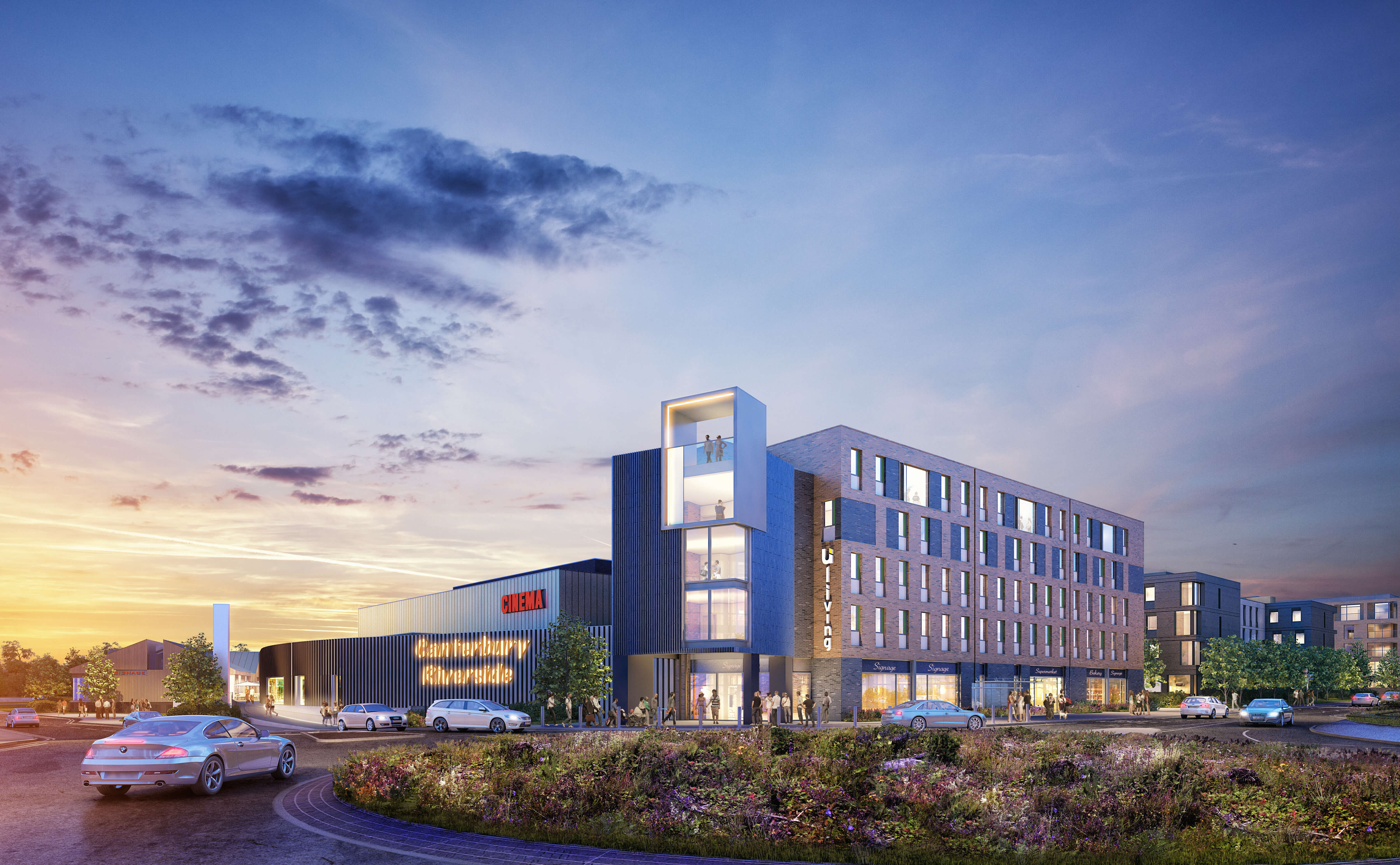

Canterbury Riverside
Canterbury Riverside
Location
Kent
Client
Bouygues Development / Link City
Dates
Commenced October 2014
Competition won 2015
Planning 2018
Value
Circa £60 million
Size
Site Area: 0.73 hectares (7 acres)
Building Area: 57, 000 sqm
Sector(s)
Leisure, Mixed Use, Residential, Retail, Student Accomodation
Scope
Architecture, Master planning, Planning
Status
Planning
The redevelopment of the Kingsmead area of Canterbury is one of Canterbury City Council’s key priorities. In 2014 The City Council marketed the site to potential development partners. In May 2015 the team led by Bouygues and PRC were chosen as the preferred partner to bring forward the redevelopment of this site. Since that time the project team have been working closely with the council.
The plans for the site seek to respond to the aspirations of the Council and local community, to provide a high quality mixed-use development anchored by a multi-screen cinema as part of a vibrant and viable new neighbourhood.
The proposed redevelopment comprises:
- A new state-of-the-art cinema providing 8 to 10 screens
- A wide range of commercial units, including restaurants, shops, bars and other leisure uses
- A cultural square providing a flexible public open space to host civic events, markets, outdoor theatre productions and seasonal activities such as a winter ice skating rink
- Circa 500 purpose built and managed student living units
- A mixture of 189 family homes and apartments
- Parking spaces for the commercial activities in an undercroft car park
- Additional parking for all family homes and apartments
- Opening up public access to the River Stour through a new riverside walkway
The complex assembly of diverse building types to form a neighbourhood is designed to be an active and vibrant place throughout the day and week,
The project is designed around the complex movements of different groups of people, and in particular the common movement of students.
The intersection of public areas for large groups of people with specialist quieter areas and uses is important to the success of the scheme whether it be the cinemas (auditoria) to quieter more private places such as student rooms, common areas and study area.

The methodology and processes used to develop the brief includes:
- Working from a space positive design base to create a sense of place, with interacting focal points, and diverse uses as per a large university faculty.
- Planning the interaction of the different uses within the campus mindful of how they will work, and relate to each other when completed
- Public to private – Community to individual – Crowd to quiet
The placement of the houses and apartments, furthest from the central square. And locating the student housing close to the heart of the public areas.
The public realm design of the Canterbury riverside, is perhaps it’s most important and relevant aspect. The site is located adjacent to Northgate on the edge of the historic city centre, and is on one of the original main pilgrimage arteries of the medieval city.
How our proposal integrates and interacts with its city and riverside location, and how it is designed to be an extension of this to form a neighbourhood.
The sizes of the public spaces have been carefully considered with regard to orientation, views, sheltered and sunny places to sit.
All this is very important for the design of a large faculty and how it works within itself and relates to the rest of the university campus.


The key challenge of the project brief and how it is expressed on the site, lies in the placement of the different uses, so that their interaction guarantees a vibrant sense of place and identity.
A holistic strategy for a complex site such as this emerges most successfully from an integrative design process – where the developer, Contractor, design team and key stakeholders work together to identify priorities and set measurable and achievable targets. These have included: Site selection and layout design, Materials, Energy, Water, Ecology and Landscape, Transport, Pollution, Health and Wellbeing.